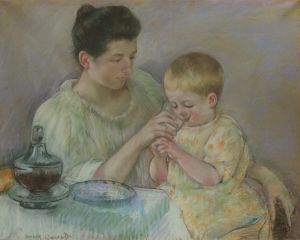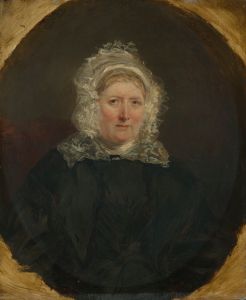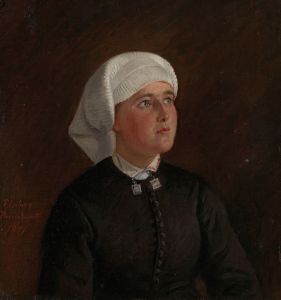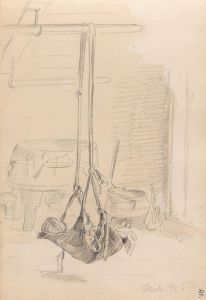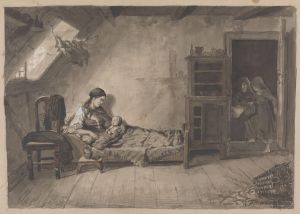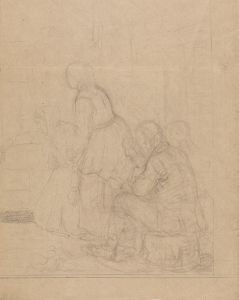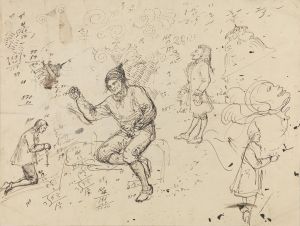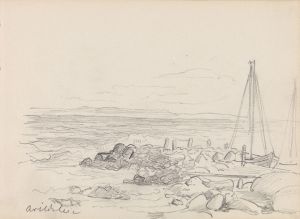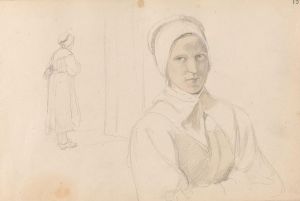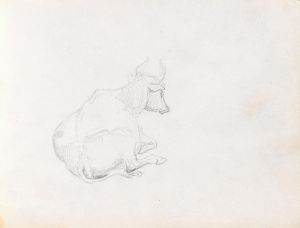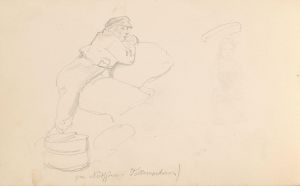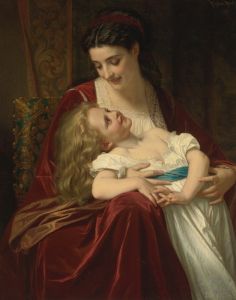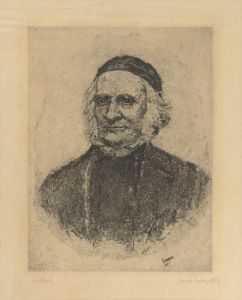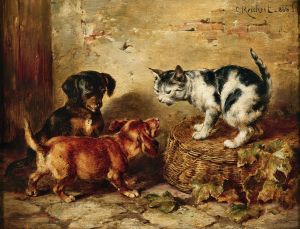
Kvinne med barn på fanget
A hand-painted replica of Adolph Tidemand’s masterpiece Kvinne med barn på fanget, meticulously crafted by professional artists to capture the true essence of the original. Each piece is created with museum-quality canvas and rare mineral pigments, carefully painted by experienced artists with delicate brushstrokes and rich, layered colors to perfectly recreate the texture of the original artwork. Unlike machine-printed reproductions, this hand-painted version brings the painting to life, infused with the artist’s emotions and skill in every stroke. Whether for personal collection or home decoration, it instantly elevates the artistic atmosphere of any space.
Adolph Tidemand was a prominent Norwegian painter in the 19th century, known for his detailed and evocative depictions of Norwegian folk life and traditions. One of his works, "Kvinne med barn på fanget" (translated as "Woman with Child on Her Lap"), exemplifies his focus on everyday life and the intimate moments within it. Although specific details about this particular painting are scarce, it is consistent with Tidemand's broader oeuvre, which often centered on themes of family, tradition, and the rural Norwegian lifestyle.
Tidemand was born on August 14, 1814, in Mandal, Norway. He pursued his artistic education at the Academy of Fine Arts in Copenhagen and later continued his studies in Düsseldorf, Germany, which was a significant center for art at the time. The Düsseldorf School of Painting, where Tidemand honed his skills, was known for its emphasis on detailed realism and historical subjects, which influenced Tidemand's style significantly.
Throughout his career, Tidemand was deeply interested in capturing the essence of Norwegian culture and the lives of its people. His works often depicted scenes from rural Norway, focusing on the customs, costumes, and daily activities of its inhabitants. This focus on national identity and cultural heritage was part of a broader movement in 19th-century art, where artists sought to explore and preserve their national characteristics in response to the rapid changes brought about by industrialization and modernization.
"Kvinne med barn på fanget" fits within this context as a representation of familial bonds and the nurturing aspect of rural life. While specific details about the painting's creation, such as its date or the identity of its subjects, are not readily available, it can be inferred that Tidemand's intent was to portray a moment of tenderness and connection between a mother and her child. This theme is recurrent in Tidemand's work, where he often highlighted the strength and resilience of family units within the Norwegian countryside.
Tidemand's paintings were well-received in his time, and he became one of Norway's most celebrated artists. His works were not only appreciated for their technical skill and attention to detail but also for their ability to convey the spirit and character of Norwegian life. Tidemand's art played a significant role in shaping the national identity of Norway during a period when the country was seeking to assert its cultural independence.
In addition to his standalone works, Tidemand frequently collaborated with fellow artist Hans Gude. Together, they produced several notable pieces, such as "Bridal Procession on the Hardangerfjord," which combined Tidemand's figures with Gude's landscapes. These collaborations further cemented Tidemand's reputation as a key figure in Norwegian art.
While "Kvinne med barn på fanget" may not be as widely recognized as some of Tidemand's other works, it remains an important piece within his body of work, reflecting his dedication to portraying the intimate and personal aspects of Norwegian life. Through his art, Tidemand provided a window into the world of 19th-century Norway, capturing the beauty and simplicity of its rural traditions and the enduring strength of its people.





